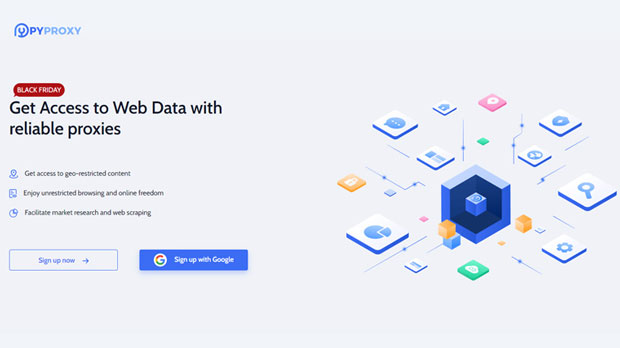When using a socks5 proxy, many internet users may wonder whether their Google search results will change. In the digital age, internet privacy and security are becoming increasingly important, and proxies offer a tool for enhanced anonymity. SOCKS5, a popular type of proxy, can route internet traffic through remote servers, masking the user's IP address. But what effect does this have on the results returned by Google search engines? This article will explore how using a SOCKS5 proxy may alter Google search results, providing a detailed overview of its impacts and the factors influencing these changes. Understanding socks5 proxies and Their FunctionalityBefore delving into the potential effects on search results, it's essential to understand how SOCKS5 proxies work. A SOCKS5 proxy serves as an intermediary between your device and the internet, enabling you to connect to websites through a different IP address. Unlike traditional proxies that only handle specific types of internet traffic, SOCKS5 proxies are versatile and can manage any kind of protocol, including HTTP, FTP, and more.When using a SOCKS5 proxy, your internet traffic is redirected through a server located elsewhere, which can provide a level of anonymity by masking your real IP address. This functionality is different from a VPN, which encrypts the user's internet connection, while SOCKS5 proxies only alter the traffic routing. This difference is important to consider when evaluating the impact of using a SOCKS5 proxy on search results.How Google Determines Search ResultsGoogle's search algorithms are designed to deliver personalized and relevant search results based on various factors. These include the user's location, search history, and browsing patterns. Understanding this is key to analyzing how using a SOCKS5 proxy can affect search outcomes.1. Location-Based Results: Google tailors search results based on the user’s geographical location. For example, if you search for "restaurants" while in New York, Google will prioritize results for restaurants in the New York area. This is why many users notice different search results depending on where they are physically located.2. Search History and Personalization: Google also takes your previous search behavior into account. If you've searched for certain topics repeatedly, Google will prioritize results related to those topics, showing more personalized content.3. Device and Network Information: Google uses device data, network attributes, and even cookies to refine search results. The more data it gathers, the more precise the search results become in reflecting your individual needs and interests.The Impact of SOCKS5 Proxies on Google Search ResultsNow, let’s examine how using a SOCKS5 proxy can influence these factors:1. Change in IP Address and Location: The most significant change a SOCKS5 proxy introduces is altering the IP address and location from which you are connecting to the internet. If the proxy server is located in a different country or region, Google may show search results tailored to that location, rather than your actual physical location. For instance, if you use a SOCKS5 proxy with a server in the UK, Google may show UK-based search results even if you're physically located in another part of the world.2. Bypassing Regional Restrictions: Many websites, including Google, provide region-specific content, and search results can vary based on the user’s location. A SOCKS5 proxy allows you to bypass these regional restrictions. If you are located in a country with limited access to certain information, using a SOCKS5 proxy may allow you to see different search results or access content that would otherwise be restricted in your region.3. Privacy and Personalization: Since a SOCKS5 proxy masks your real IP address, Google may not be able to personalize results as accurately. Personalized search results often rely on tracking user behavior through cookies, browsing history, and IP addresses. With the use of a proxy, Google will have limited access to this information, meaning the results you receive could be less personalized and more generic. However, if you're logged into your Google account, some degree of personalization will still occur, albeit potentially with some delay in recognizing your preferences.4. Impact on Search Results’ Relevance: Because Google tailors search results based on a variety of factors, including the user’s IP address, using a SOCKS5 proxy can affect the relevance of the results. For example, if you're located in the US but use a proxy located in Canada, you might see search results more suited to Canadian interests or local trends, which may not always be aligned with your needs.Additional Considerations: Cookies, Browser Fingerprints, and Search Engine BehaviorWhile a SOCKS5 proxy can mask your IP address and location, it does not provide complete anonymity. Several other factors can influence Google’s ability to recognize and personalize search results for you:1. Cookies and Tracking: Even if you’re using a SOCKS5 proxy, Google can still track your activity through cookies stored in your browser. These cookies allow Google to remember your past searches and tailor results accordingly. If you want to avoid this, you may need to use additional tools like clearing cookies regularly or using privacy-focused browsers that limit tracking.2. Browser Fingerprinting: Google and other websites can also use browser fingerprinting techniques to track users, even if they are using a proxy. This involves identifying unique features of your browser, such as screen resolution, operating system, and installed plugins. While SOCKS5 proxies mask your IP address, they do not prevent browser fingerprinting from occurring, which could still allow Google to recognize you across different searches.3. Search Engine Behavior: Google continuously refines its algorithms to combat manipulation and provide the most relevant results. If Google detects unusual patterns in your search behavior or consistently identifies you as using a proxy, it may adjust the search results accordingly to ensure they are relevant and not influenced by proxy usage.Potential Benefits of Using a SOCKS5 Proxy for Google SearchesDespite the potential challenges, there are several scenarios in which using a SOCKS5 proxy for Google searches can be beneficial:1. Accessing Restricted Content: For users in countries where certain information is restricted or censored, a SOCKS5 proxy can enable access to search results that would otherwise be unavailable. This is especially useful in regions with heavy internet censorship, where access to global search engines or content may be limited.2. Privacy Protection: If privacy is a major concern, using a SOCKS5 proxy allows you to hide your true IP address. This can prevent Google from tracking your real-world location, search history, and other personal data, giving you more control over the information you share.3. Testing Search Results in Different Regions: If you are a digital marketer or researcher, using a SOCKS5 proxy can be an effective way to test how Google’s search results vary across different locations. This can help businesses tailor their SEO strategies based on regional variations in search results.Conclusion: Weighing the Pros and ConsIn conclusion, using a SOCKS5 proxy can have a significant impact on the Google search results you see. While it primarily affects the location and personalization aspects of search results, it does not offer a complete solution for anonymity or privacy. Depending on your goals—whether that’s accessing region-specific content, enhancing privacy, or testing search results in different geographical areas—a SOCKS5 proxy can be a useful tool. However, it’s important to understand that Google’s algorithms will still try to provide relevant results, and proxies may only offer partial solutions to the complexities of internet search personalization.Before using a SOCKS5 proxy, it’s crucial to understand how it interacts with search engines and how it can alter your browsing experience. Ultimately, while SOCKS5 proxies offer a layer of privacy and can change the results based on geographic factors, they should be used thoughtfully, especially when personalized or location-specific search results are a critical factor.
Jan 09, 2025






















































